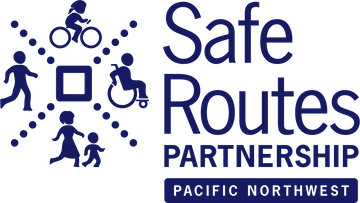In the spring of 2017, House Bill 2017 passed in the Oregon State Legislature, dedicating $10 million annually for Safe Routes to School infrastructure, increasing to $15 million annually in 2023. The purpose of the funding is to build projects within a one mile radius of schools to make it safer and easier for students to walk and bicycle to school. Following HB 2017, the Oregon Department of Transportation formed a Rulemaking Advisory Committee (RAC) to amend the Oregon Safe Routes to School Rule. The purpose of the committee is to align the rule with new funding made available by recent state legislation, and consider how infrastructure funding for Safe Routes to School projects should be structured.
WHAT THE RULEMAKING COMMITTEE IS WORKING ON
In February, the RAC finalized definitions and approved changes to the Oregon Administrative Rule (OAR 737-025).
- Eligibility: cities, counties, ODOT, tribes, and transit agencies.
- High level process: A Safe Routes to School Advisory Committee will be formed to provide advice on program elements and recommend projects for any funding awards.
- Program definitions: Four definitions were added to clarify the new law, including:
- Title I: School where 40% or more students are from low-income households.
- Plan: Any related and adopted infrastructure plan, SRTS Action Plan, or SRTS Infrastructure Plan.
- Priority Safety Corridor: Any road with 40 mph or higher, or additional safety qualifiers.
- Cash Match: Hard costs associated with project construction.
The RAC also discussed program design options and overarching funding targets. At future meetings the RAC will take up the specifics of the funding targets, eligible matching funds, and other details, but for now the committee agreed that funds will be divided into the following three programs:
- Rapid Response Program: No more than 10 percent of funds set aside for urgent needs or systemic safety issues identified between grant cycles.
- No more than 2.5 percent of funds can be used for administration and technical services to help communities apply for projects.
- Competitive Program: The remainder of funds will be set aside for a competitive program.
- Cities, counties, ODOT, transit agencies, and tribes will be eligible to apply
What happens next?
- The draft SRTS Rule goes to the OTC on March 15. Public comment opportunity at the meeting.
- ODOT will run a public comment process from mid-April through the end of May. A public hearing will be scheduled for May 9, 2018, in Salem.
- The RAC will continue to meet through the spring, to work on policy and guidance for ODOT prior to the establishment of the Safe Routes to School Advisory Committee.
We want to hear from you! Our Senior Policy Manager, Kari Schlosshauer, has been working hard on the RAC to ensure the new SRTS rules will benefit the youth most in need in Oregon, prioritizing street safety fixes that reach historically marginalized communities and underserved youth. She has heard from numerous agencies across the state concerned about the high cash match requirement (40%), and has pressed for reducing the match to 20% in as many ways possible; nevertheless, it is clear that this cash match requirement will be a burden to many local agencies. Furthermore, with funds limited to just $10 million/year for the first five years, and a much higher demand for SRTS projects on both local and state roads, it will be a long walk ahead for us all, and we are working closely with ODOT to coordinate the infrastructure and non-infrastructure grants and ensure as many communities as possible can start off on the right foot and take advantage of this funding opportunity.
If you work for a public agency, what are your thoughts about the decisions made thus far? What is your agency's reaction to the cash match requirement? What's missing? What sounds great? If you have ideas for how the Safe Routes to School Infrastructure program should be set up to reach the most students needing safety improvements, please send them to Kari Schlosshauer, who will share back to the committee at the upcoming April meeting. We welcome comments on any aspects of the program.
The OAR will be presented to the Oregon Transportation Commission, with public comment opportunity, on March 15. All RAC meetings are open to the public and have options for public testimony.


